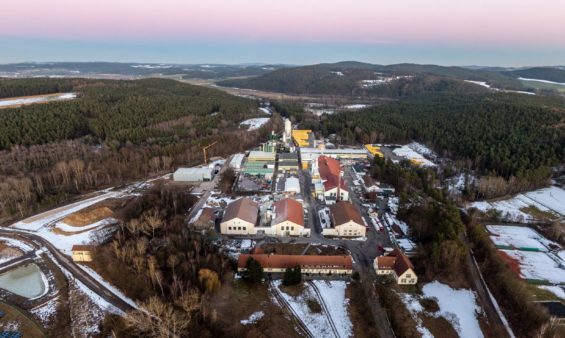Stulln Subcamp
February 1942 – mid-October 1942
The first subcamp of the Flossenbürg concentration camp evidently served the SS as a kind of pilot project for preparing to enter the war economy.
![]()
Aerial view of the former factory grounds in Stulln, 2019 (Flossenbürg Concentration Camp Memorial / Photo: Rainer Viertlböck)
-
Prisoners
Initially over 70 prisoners, eventually at least 99; mostly Germans, in addition several Polish, Russian, and Czech prisoners.
-
Forced labor and quarters
Construction of a boiler house for the VAW (Vereinigte Aluminium-Werke) fluorite operation. The prisoners were quartered in a strictly separated area – enclosed with barbed wire – of the barracks compound “Waldfrieden”. Beforehand, this had served as the quarters for POWs and civilian forced laborers
-
The conditions in Stulln were relatively good, the food rations adequate. The prisoners also worked together with German civilian employees.
-
Guards
Detail leader Schirner and SS Guards
-
Death toll
No verified deaths
-
Disbanding of the camp / end of the war
The subcamp was disbanded just six months later with reference given to more urgent tasks. On October 17, 99 prisoners were transferred to the Dresden subcamp (SS Engineers’ Barracks).
-
Commemoration
None
